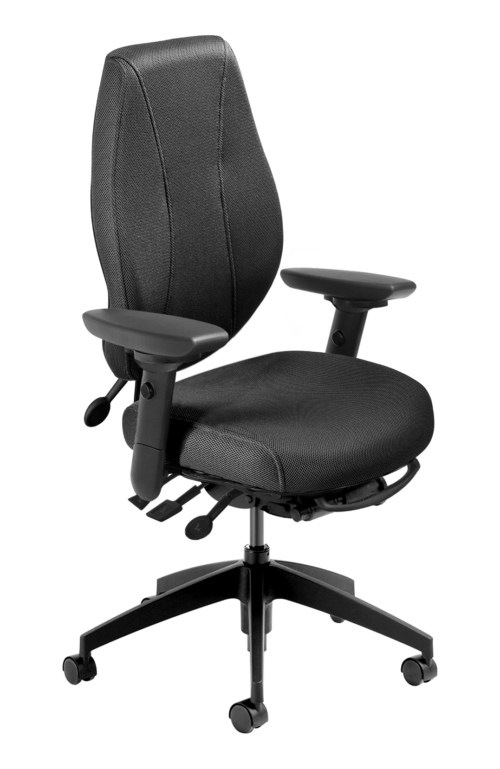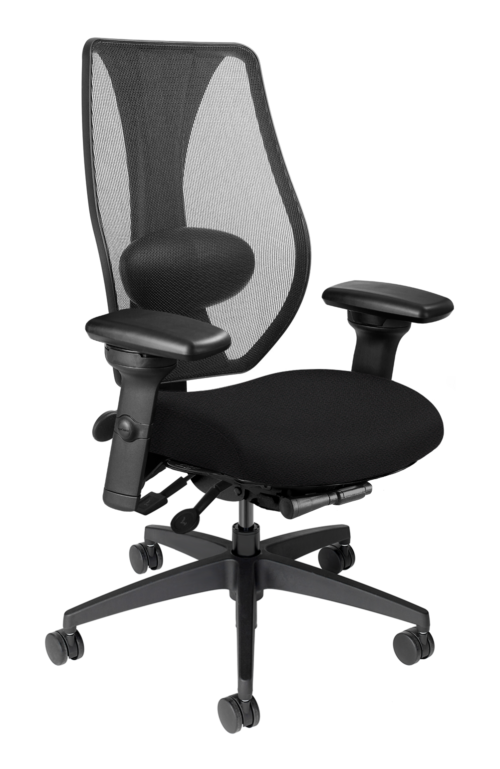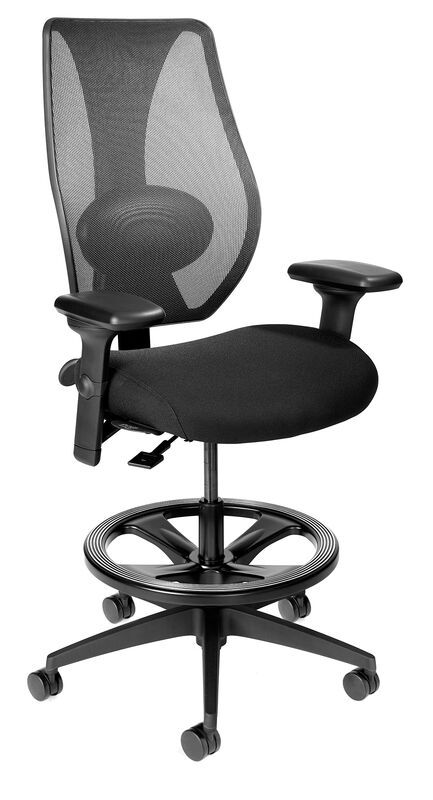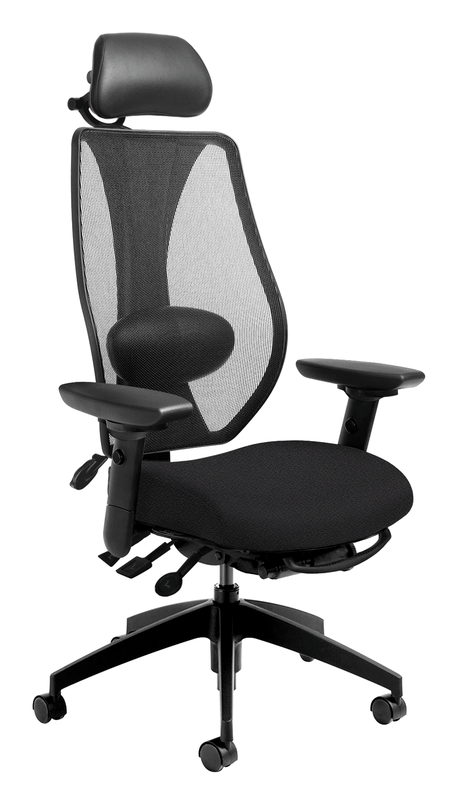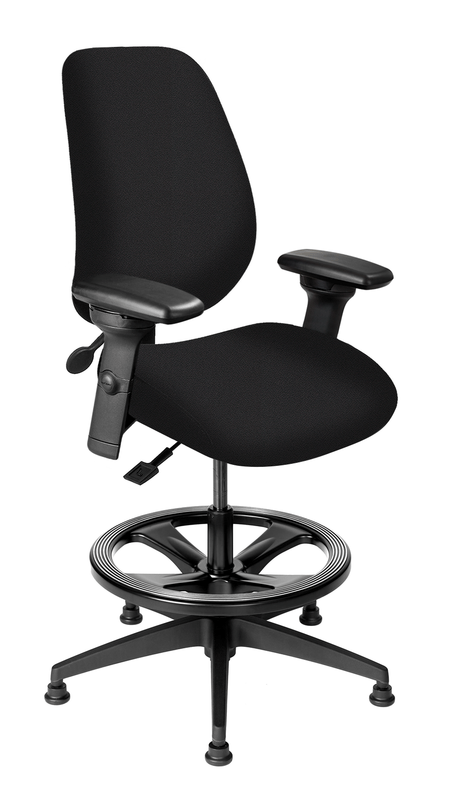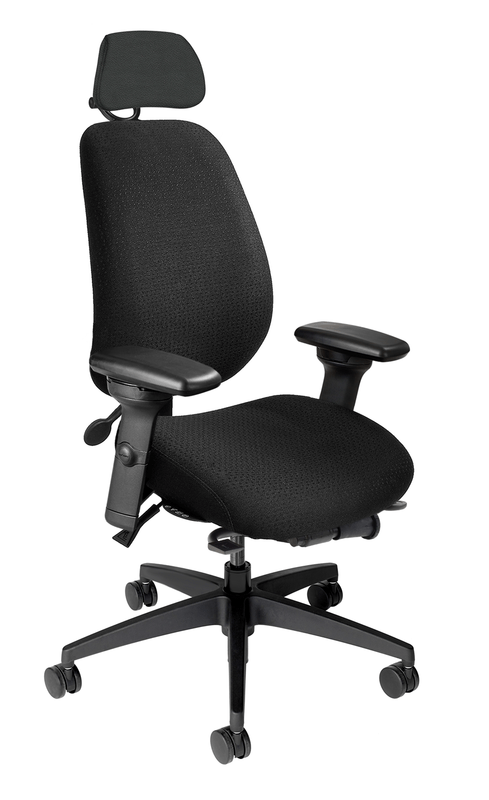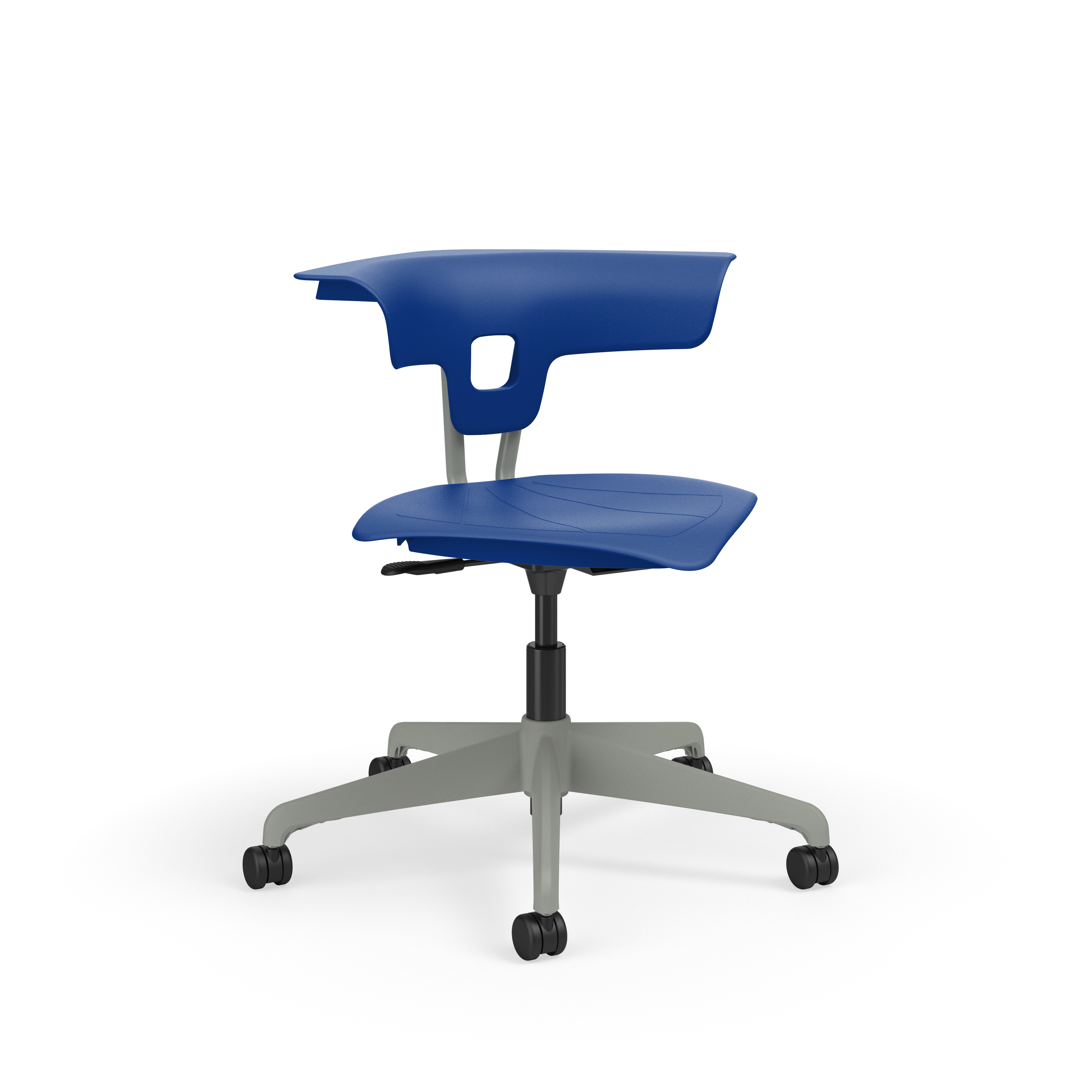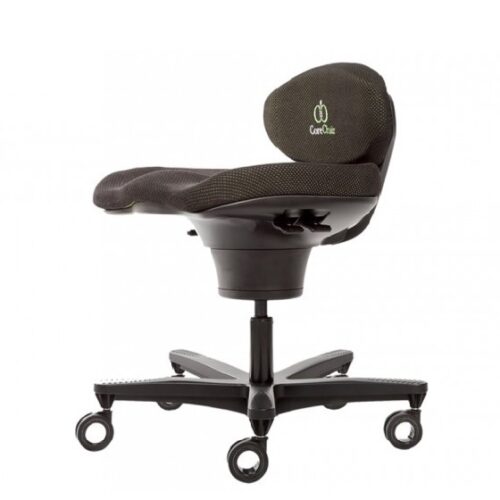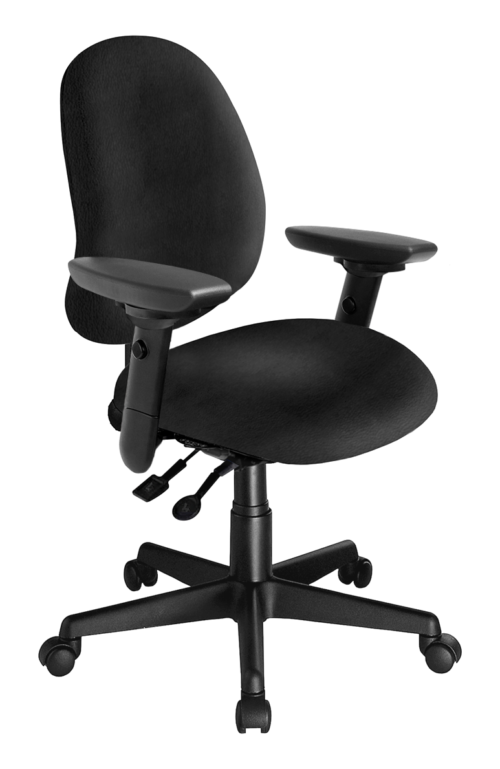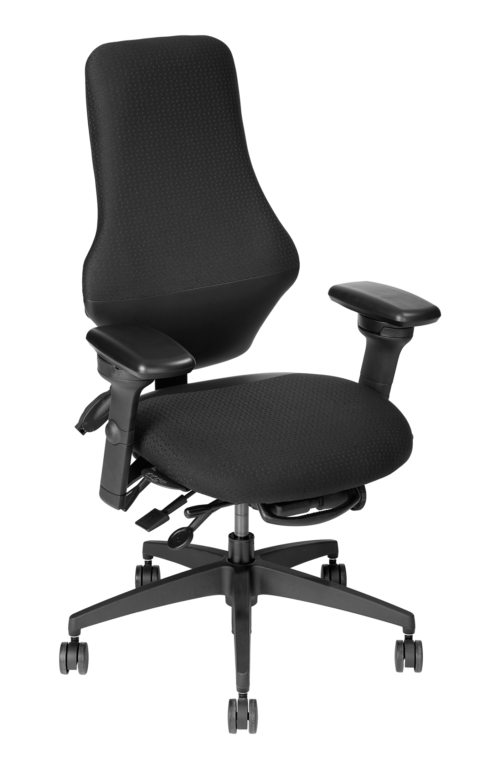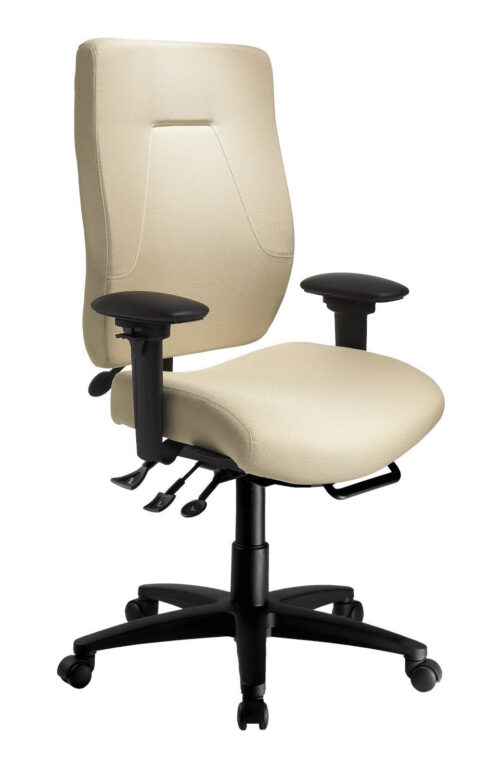Ergonomic Office Chairs
Ergonomic seating is crafted to enhance comfort while minimizing health risks. Ergonomic seating is designed to enhance comfort and minimize health risks. Our chairs feature adjustable components and contoured shapes engineered to align with the natural curves of the body. They promote good posture, provide proper back support, and help prevent back problems, ensuring long-term comfort. Additionally, they incorporate quality materials and contoured designs to ensure the longevity of the seat cushion while reducing unwanted pressure where it matters most. By reducing discomfort, ergonomic chairs can significantly boost productivity, allowing you to stay focused on tasks without the distraction of physical strain. Choosing an ergonomic office chair from Ergonow is an investment in both immediate comfort and long-term health benefits, enabling you to perform at your best for longer periods.
When choosing an ergonomic office chair, it’s important to consider the specific features that will provide the best support and comfort for your needs. Our range at Ergonow includes task chairs, executive chairs, and mesh office chairs, each designed to promote better posture and productivity.
Key Features to Consider
When choosing an ergonomic office chair, specific features like adjustability options and material choices play a crucial role. Ensuring the chair supports essential ergonomic elements is just as important. These factors will help promote both comfort and efficiency in your workspace.
Adjustability Options
An ergonomic chair should offer a variety of adjustability settings to meet your needs. Seat height is crucial, enabling you to position yourself at the proper height in relation to your keyboard and mouse placement.. Look for adjustable lumbar support to align and maintain the natural curve of your lower back. Seek an independent back angle adjustment to ensure the backrest provides consistent support in the right position while manipulating the keyboard and mouse. Adjustable armrests provide customized support for your arms, reducing strain on your shoulders
The ability to adjust the seat depth plays a significant role in leg comfort, ensuring there’s a small gap between the back of your knees and the chair. A reclining seat pan function can help in altering your seating posture, reducing pressure on your spine throughout the day. Consider the style of casters as well, for they can help improve movement to different areas of your workspace.
Material Choices
The choice of materials in an ergonomic chair impacts both comfort and durability. Breathable mesh is popular for backrests as it promotes airflow, keeping you cool during long work hours. Some seats offer varied cushions made of dual density foam, memory foam or triple density foam that provide extra comfort and support. Additionally, a coccyx cutout can be incorporated into the seat pan to accommodate specific medical needs.
When selecting a chair, consider the feel and durability of the upholstery. High-quality materials are essential for withstanding wear and tear over time. The choice of material can also enhance the user experience; for instance, slip-resistant surfaces, wipeable vinyl for easy cleaning, high-grade fabrics, or ESD (electrostatic discharge) options for specific environments.
Support and Comfort Elements
Support and comfort are fundamental for avoiding discomfort during extended work hours. Lumbar support is crucial, keeping your spine aligned and reducing back strain. The contour of the chair should match the natural shape of your body.
The seat pan size and cushion durability should provide adequate support for your thighs while offering firm yet comfortable support that resists flattening over time. Armrests should be made of durable but quality material that provide extra comfort as you type and or mouse. Check if the chair’s seat and back have contours that encourage a natural posture.
At Ergonow, we emphasize these essential features to ensure you find a chair that meets your ergonomic needs while maintaining a comfortable and productive work environment.
Selection of Durable Materials
When considering an ergonomic office chair, the material is key to its longevity. Leather and fabric are popular choices; leather is luxurious and ages well, while fabric offers more breathability. For a more budget-friendly option, faux leather provides a similar look with lower costs but may not last as long under heavy use.
The chair’s frame is also important, with materials like steel or aluminum known for their durability. Plastic components are lightweight and cost-effective; however, they may wear out faster than metal parts. Check for a good warranty to offer peace of mind and cover unexpected issues.
Maintenance Best Practices
Proper care keeps your ergonomic chair in top shape. Begin with regular cleaning. For leather chairs, use a mild cleaner and conditioner to keep the surface supple and protected. Fabric chairs benefit from vacuuming and spot cleaning to manage stains and dust.
Check and tighten screws and parts occasionally to prevent wear and tear. Use soft cloths for polishing and avoid harsh cleaners that might harm materials.
If your chair has adjustable parts like back height, armrests or recline functions, operate them gently to maintain their function. For damaged parts, consult with Ergonow regarding the warranty; many chairs come with impressive warranty for parts and labour to repair the chairs. Regular care keeps your office chair comfortable and extends its lifetime.
The Importance of Adjustable Features
Adjustable features in an office chair are key for enhancing comfort and promoting health. These elements allow you to modify your chair to suit your body and various tasks, which can prevent discomfort and boost productivity.
Customizing Your Chair to Your Body
A well-designed ergonomic chair should allow you to adjust the seat, backrest, and armrests to fit your body. These features can help maintain proper posture and distribute weight evenly, reducing strain.
- Seat Adjustability: The seat height and depth can be tailored to ensure your feet rest flat on the ground, aiding circulation and comfort. If you need to raise your chair to align your work height to the keyboard and mouse, check to see if the chair offers the height range you require.
- Adjustable Backrest and Headrest: Adjustability in the backrest is important so that the chair supports the natural curve of your spine, minimizing back pain. The headrest can relieve neck strain by providing proper neck alignment if viewing multiple monitors.
- Armrests: Adjustable armrests provide support for your shoulders, neck and upper back muscles when properly aligned. Pay attention to how far forward the armrests are positioned relative to your body. Ensure they do not obstruct your ability to sit close to the keyboard and mouse.
Adjustability for Different Tasks
Different tasks require different postures. An adjustable chair allows you to change your seating position to suit these needs.
If you spend long hours sitting in front of a computer, the chair can be adjusted for forward posture, helping keep your back straight and your neck relaxed.
- Tilt Mechanism: Enables you to recline slightly, relieving pressure on your spinal discs. This is useful during phone calls or reading tasks.
- Weight Capacity: Ensures the chair accommodates users of different sizes, maintaining stability and comfort.
These adjustments promote movement throughout your day while maintaining productivity and comfort, accommodating various needs during the workday.
Frequently Asked Questions
What features should you look for in an ergonomic office chair to promote proper posture?
When selecting an ergonomic chair, consider a seat pan that fits your leg length and can be positioned at the correct height. The chair should offer adjustable seat height and depth, lumbar support, and a backrest designed to follow the natural curve of your spine rather than rounding your posture (avoid concave-shaped backrests). Ensure the chair provides adequate support for the lower back (lumbar curve).
A high-quality feature to look for is a backrest with angle adjustment, allowing you to sit with your back comfortably resting against it at all times. Additionally, make sure the armrests are adjustable to enable your arms to rest at a 90-degree angle. This helps maintain an upright posture and reduces strain on your shoulders.
How can an ergonomic chair alleviate back pain during extensive work hours?
Ergonomic chairs are designed to support the spine’s natural alignment, reducing pressure on the lower back. They promote proper posture with lumbar support and adjustable features that help maintain spinal alignment and evenly distribute weight. The adjustability features also encourage movement, which individuals should take advantage of to avoid static seated postures. This can alleviate discomfort and help prevent chronic back pain, particularly during extended periods of sitting.
Can ergonomic office chairs improve productivity, and if so, how?
Ergonomic office chairs can boost productivity by increasing comfort and reducing physical stress. This allows you to focus better on tasks. When you sit comfortably without discomfort or the need for constant readjustment, you can maintain concentration for longer periods. This leads to more efficient and effective work sessions.

